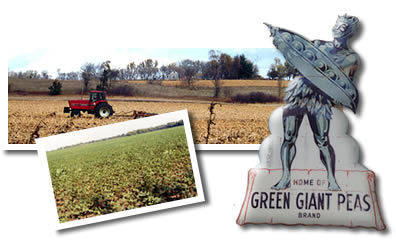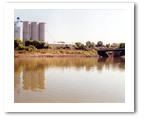Minnesota River Virtual Tour - Le Sueur
|
|
||||||
|
Stop 10 - Le Sueur (River Mile 82) |
||||||
 |
 |
|||||
 |
||||||
|
With the exceptions of a few obvious places where livestock were able to wander freely down to the riverbank or where corn or soybeans were planted to the bank, we saw little evidence of intensive farming activity along the Minnesota River proper. |
||||||
|
Agriculture The river flows through some of the richest farmland in the nation. Early settlers were drawn to the area to farm the rich prairie soils. The life of these early Euro-American settlers was made famous by Laura Ingalls Wilder's books such as On the Banks of Plum Creek and Little House on the Prairie (which were later adapted to a television series). Many of the books were set in Wilder's home town of Walnut Grove in the western portion of the basin— west of Mankato and New Ulm. Today agriculture dominates the basin—primarily in soybeans and corn. The 2002 Minnesota Agricultural Statistics indicate that the top five corn and soybean producing counties lie in the upper portion of the basin while the major hog production area of the state is clustered in the middle portion of the basin. Although row-crop agriculture predominates, the basin is dotted with islands of natural grasslands, wetlands and woodlands. Le Sueur and the Jolly Green Giant L ike many other river towns, grain elevators mark the approach to Le Sueur from the water (photo, right). If driving to Le Sueur on Highway 169, a gig  |
||||||
|
|
||||||
| | map | 1 | 2 | 3 | 4 | 5 | 6 | 7 | 8 | 9 | 10 | 11 | 12 | basin overview | home | | ||||||
